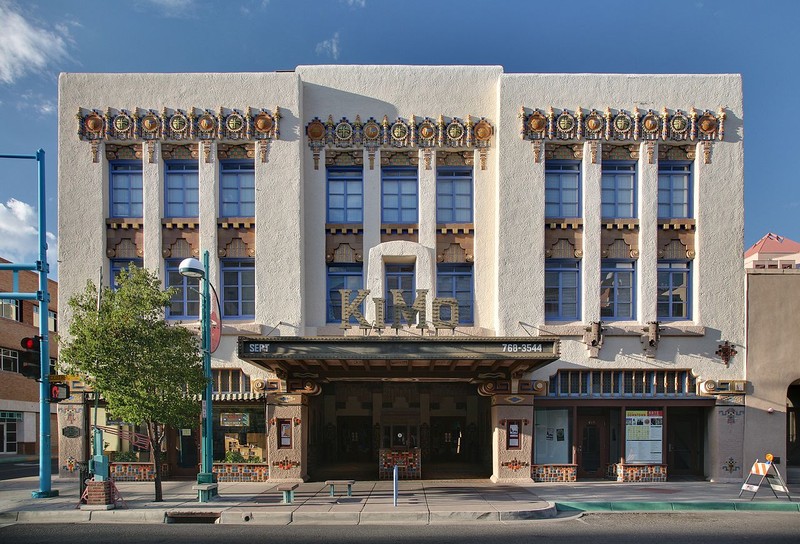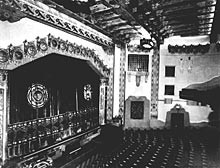KiMo Theatre and Art Gallery
Introduction
Text-to-speech Audio
Images
The Kimo Theater was saved from destruction in the late 1970s and

This picture of the stage was taken when the theater opened in 1927

Backstory and Context
Text-to-speech Audio
The KiMo Theater is one of only a handful of theaters and downtown buildings that still stand and exhibit deep influence by Native American art and architecture. Among the designs in the interior can be found several swastika designs that are woven into the rest of the artwork Long before this design was used by the German government, the swastika was a Navajo symbol that represented freedom and happiness.
Carl Boller designed the theatre based on extensive research of Native American design and culture. He travelled through New Mexico and the Navajo Nation, visiting the Pueblos of Acoma and Isleta. Boller carefully chose Native American symbolism to use in the theatre. In addition to using traditional Navajo symbols, such as the swastika, Boller employed the Navajo’s symbolic use of color, with yellow representing the life-giving power of the sun, white representing the dawn, red the setting sun, and Black the dark clouds from the north.
Many famous actors and actresses of the day performed at KiMo, including Vivian Vance, of I Love Lucy fame, Sally Rand, Gloria Swanson, Tom Mix, and Ginger Rogers. The centerpiece of the theatre are the nine wall murals by Carl Von Hassler that depict the mythical Seven Cities of Gold that conquistadors, including Francisco Coronado, searched for in New Mexico during the sixteenth century.
